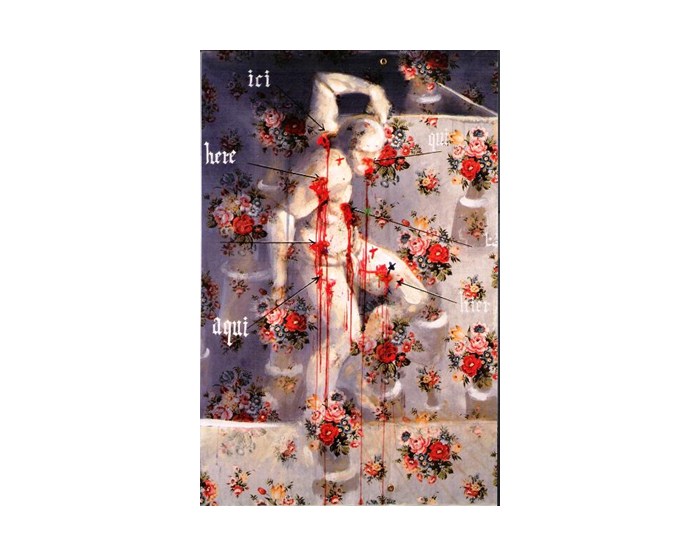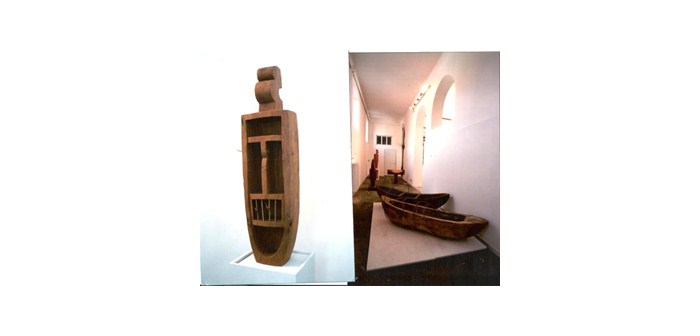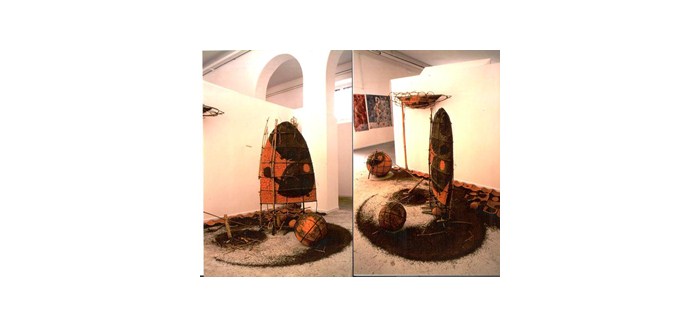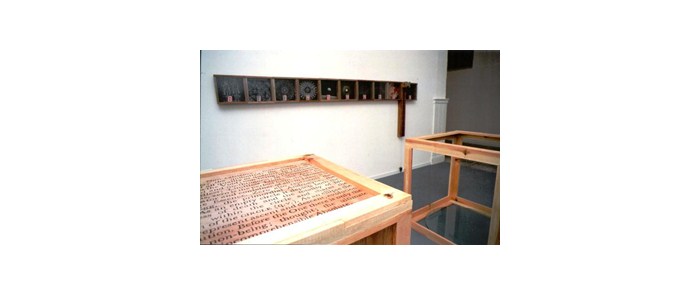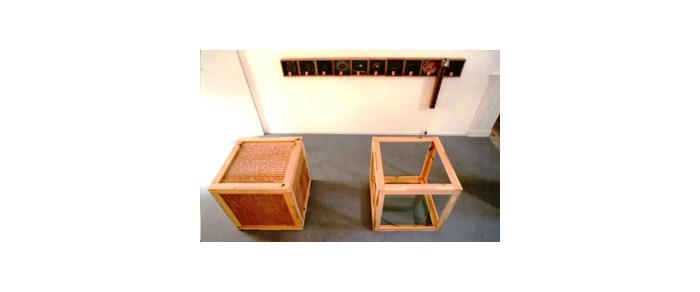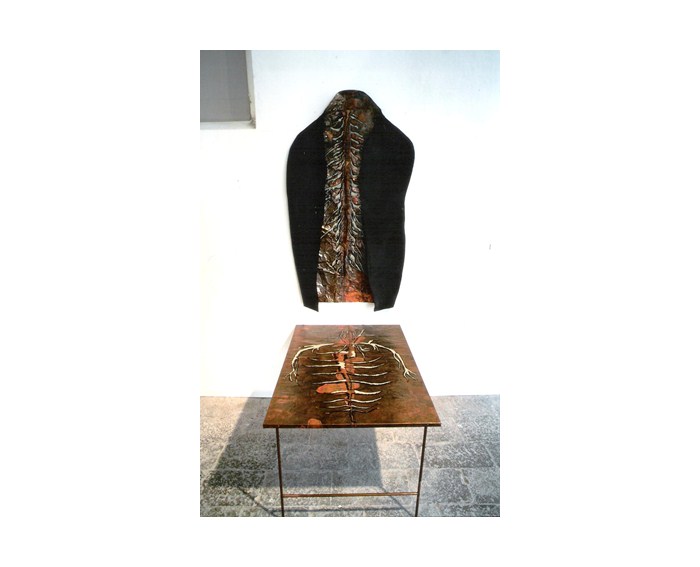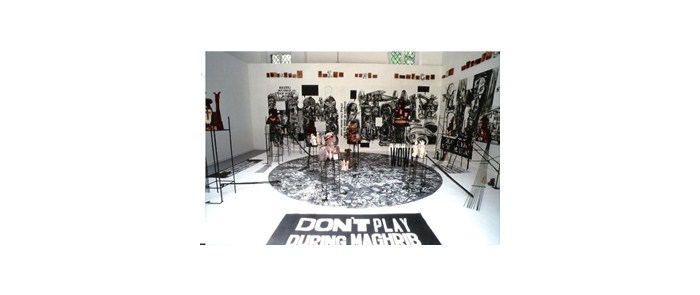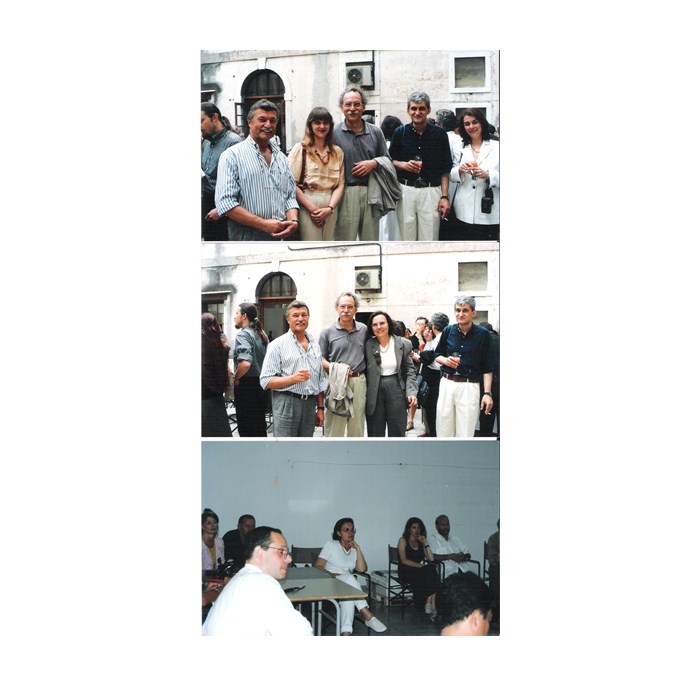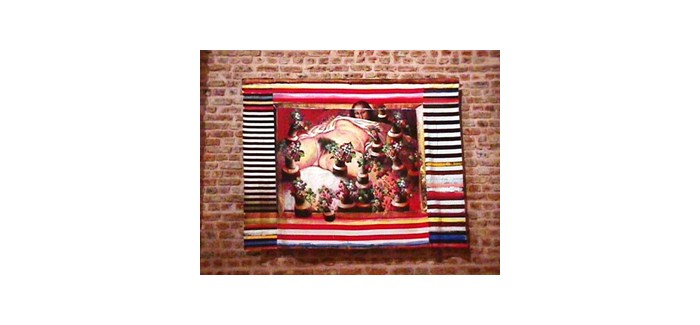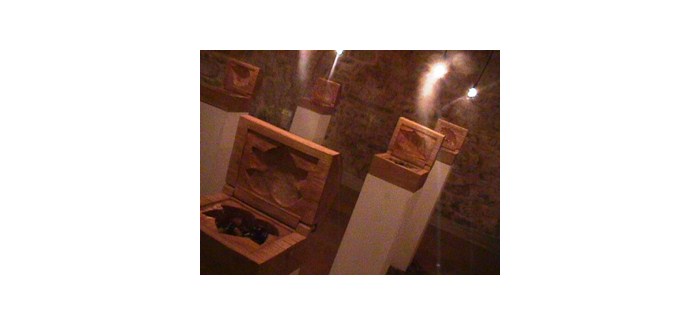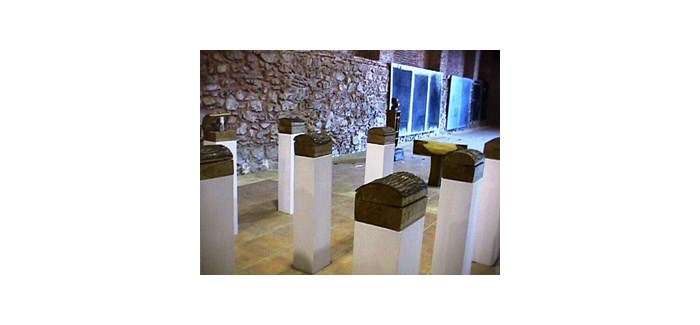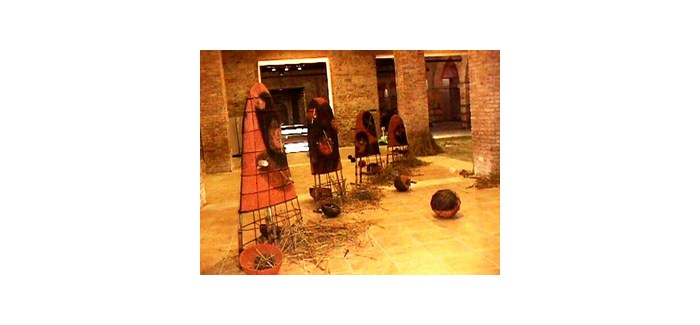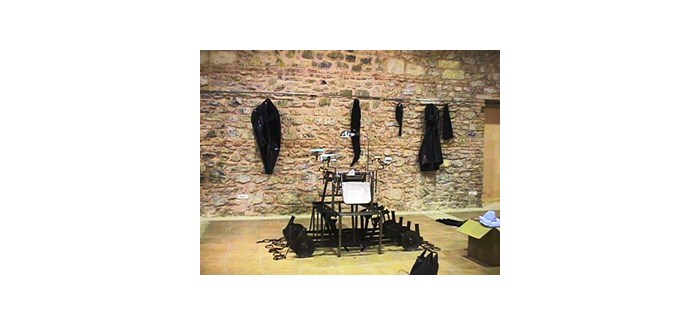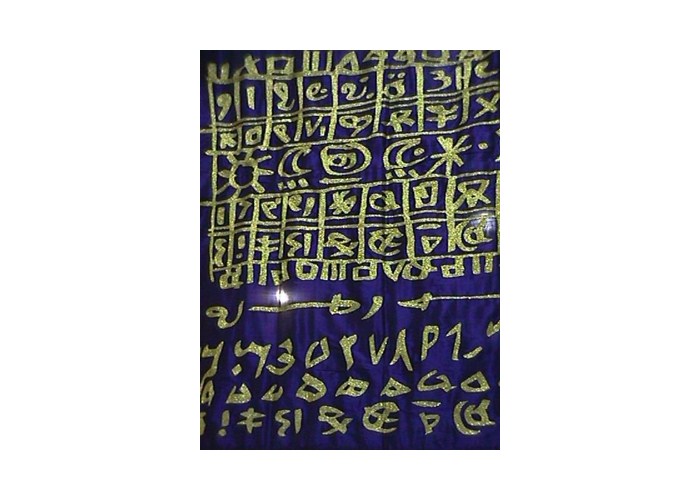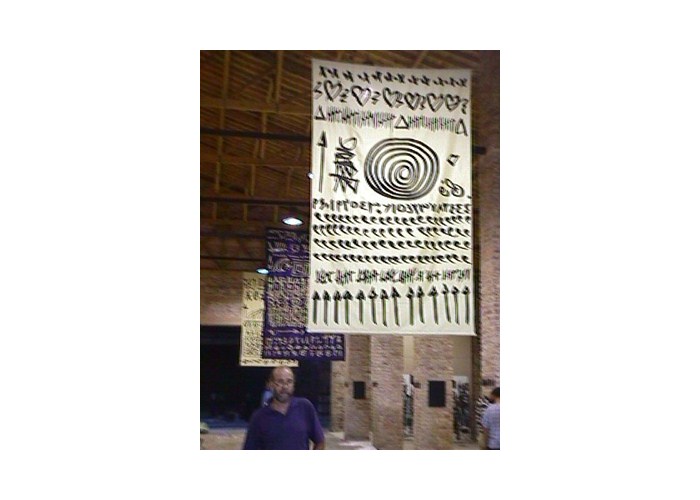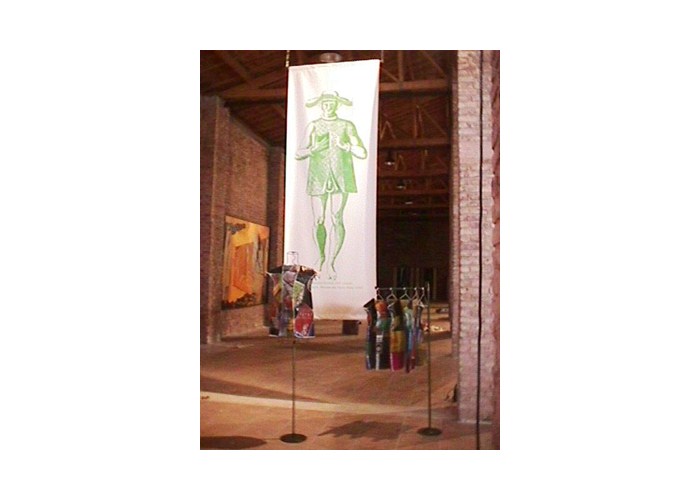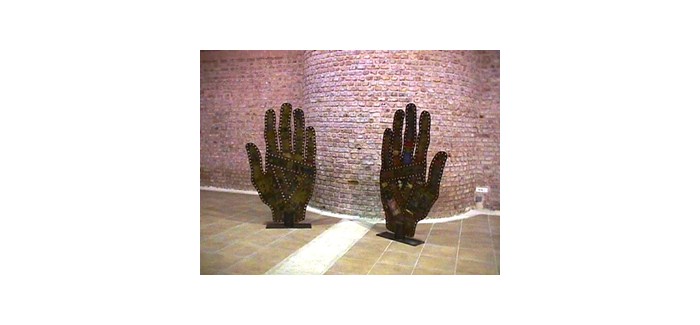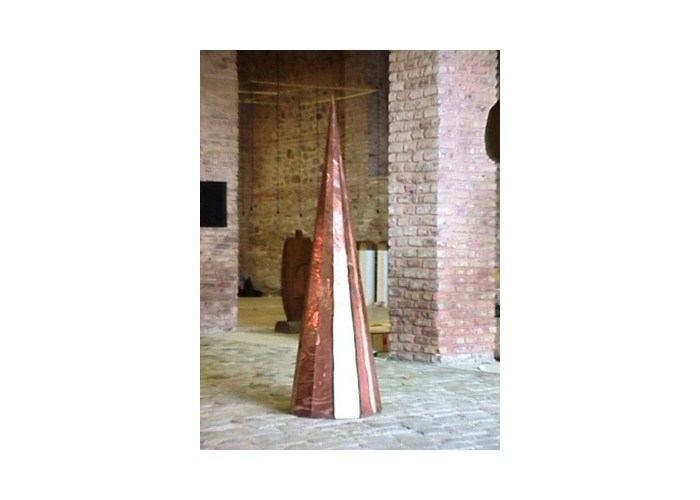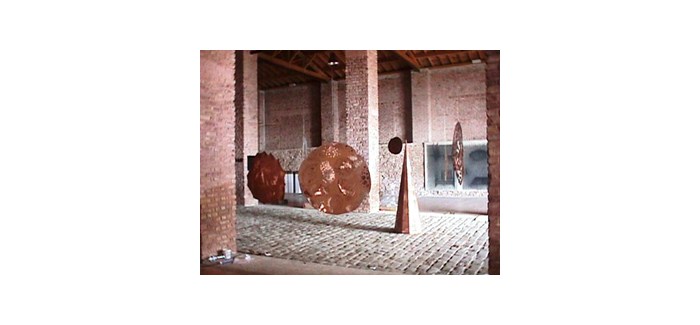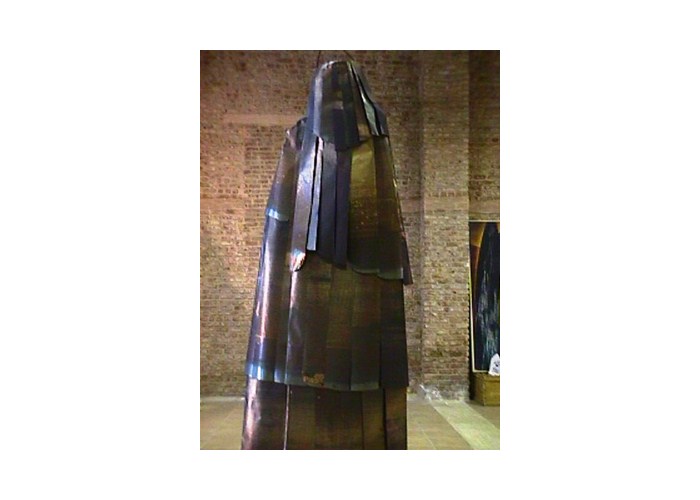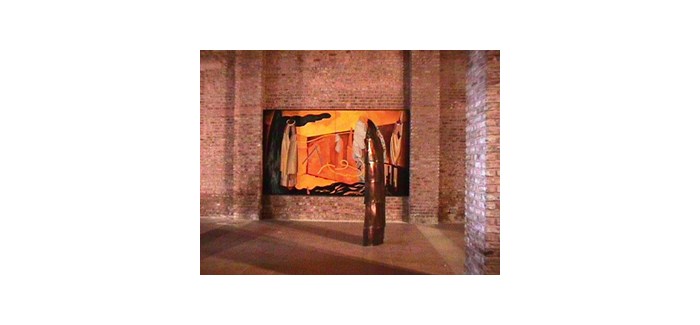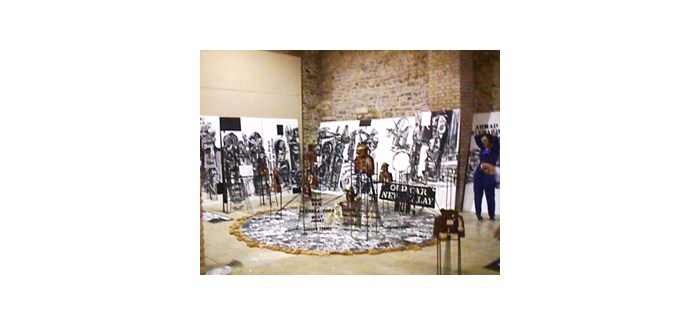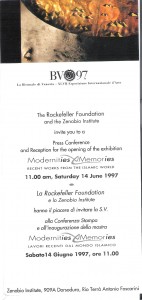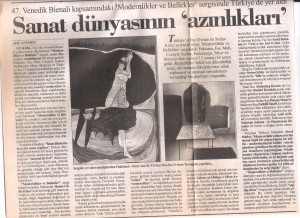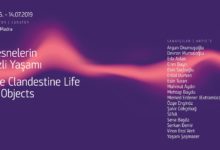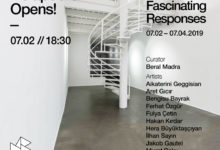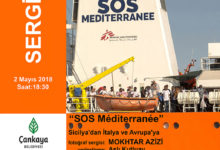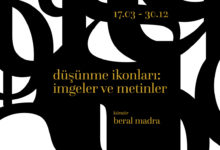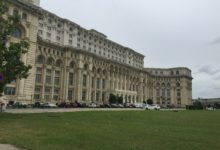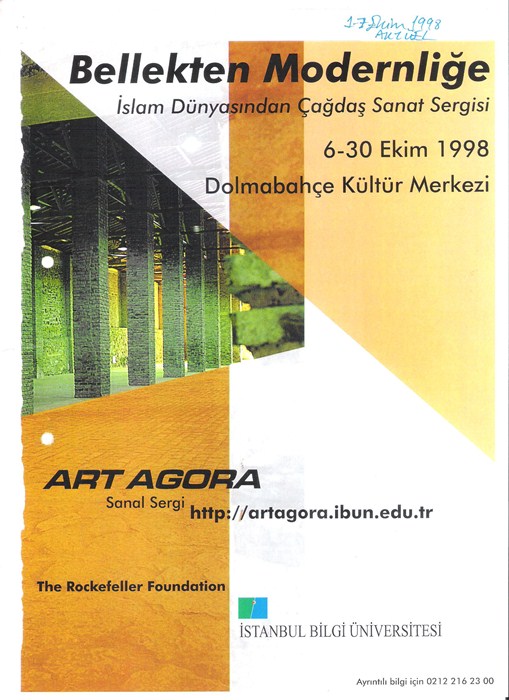
Modernities & Memories
RECENT WORKS FROM THE ISLAMIC WORLD
EXHIBITION, PANELS, ARTAGORA
6-30 October 1998
Exhibition and Panel : Dolmabahçe Cultural Center, Beţiktaţ- Istanbul
Panel and Artagora: Bilgi University, Kuştepe-Istanbul
A Collaboration of
The Rockefeller Foundation (New York) / Bilgi University (Istanbul)
Artists of the Exhibition
Anusapati (Indonesia), Zahoor Akhlaq (Pakistan), Silvat Aziz (Pakistan), Farid Belkahia (Morocco), İnci Eviner (Turkey), Serhat Kiraz (Turkey) Abdoulaye Konate (Mali), Rashid Kuraichi (Algeria), Hassan Musa (Sudan), Hendrawan Riyanto (Indonesia), Setiawan Sabana (Indonesia), Adel el Siwi (Egypt), Zulfikli Yusoff (Malaysia)
Curatorial Group of the Exhibition
Brahim Alaoui (Paris) / Pia Alisjahbana (Jakarta)/ Suhail Bisharat (Cairo) / Clifford Chanin (New York) / Salima Hashimi (Lahore) / Salah M. Hassan (Ithaca-NY) / Hasan-Uddin Han (Lexington, MA) / Beral Madra (Istanbul) / Toety Heraty Noerhadi (Jakarta) / A.D.Pirous (Bandung)
THE STORY OF THE EXHIBITION
“Modernities and Memories” was conceived in a series of meetings since 1995 initiated and supported by The Rockefeller Foundation with the aim of realizing a joint cross-cultural communication between the Islamic countries to express cultural pluralism through contemporary art works. The curatorial group meetings were held in Paris (1995), Istanbul (1996), Jakarta (1996), New York (1996) and Venice (1997). The exhibition was prepared through a defined process of inquiry focusing on contemporary aesthetics, experience and criteria of art as well as on the philosophy and artistic vocabulary of the artist as regards to her/his cultural background.
The first venue of the exhibition was 47Th Venice Biennale 1997 in Zenobio Institute, an Armenian monastery in Academia. The director of Zenobio Institute, Architect Michael Carapetian and his partner Stella Ohanian were the executive curators. To introduce this exhibition in Venice created an uniquely informative and comparative possibility for international art audiences. It is a tradition of the Venice Biennial to introduce national identities. On the other hand, this exhibition gave priority to international collaboration and cultural resources rather than national identities and thus, proposed a new model. This model introduced a collaboration and compromise between the different participatory supporters from the West and the East, without dependence and restraint on both sides; it uncovered and explained the concepts and motives of non-western artists and proposed re-evaluation of their works within the open forum of the biennial; it presented a multi-curatorial selection and an organization concluded by non-western curators and art establishments.
The curator’s statement for Venice Biennial was as follows:
– Artists work within the milieu of Islam from Indonesia to Canada. They tackle issues of modernity through reflections on traditions and memories, social and environmental concerns, conflict and change, and the crossing of boundaries in an ever more homogeneous world.
– For the exhibition ‘Modernities and Memories’ recent works of thirteen artists have been selected for their excellence and how they figure within the totality of the presentation. The exhibition is not by any means exhaustive and does not attempt to be representative of either region, country or artistic production. The works are presented as part of an ongoing dialogue regarding plurality and cultural expression in Muslim societies.
– The group of independent curators ( ourselves from widely different backgrounds and countries) have been engaged in dialogues since 1994, discussing and looking at the works of Muslim artists. Recognizing that cultural diversity and multiple viewpoints in today’s world can no longer be grasped and understood by one mind alone, we developed a collaboration based on consensus, instead of ‘owning’ viewpoints through connoisseurship. This led to complex and rich overlays of concerns and expressions that could not have been achieved otherwise.
– The notion of pluralism along with cross cultural dialogues of modernity and memory (which can exist simultaneously) indicates that different societies can share conceptual possibilities for meaningful exchanges. As curators supported by the Rockefeller Foundation, we believe we were provided with an opportunity to seek a new space for intelligibility. We explored the range between polemics and apologetics in the expressions and critical examination of Muslim societies: importantly, from within the cultures themselves. The dialogue becomes not only one between Muslims and others (or between Asia and Africa, and the West) but also between different Muslims.
The artists in this exhibition have been selected for their ideas and concepts which reflect the social, the political, and the cultural environments and formations in their respective countries, for their competent exploitation of tradition and modernism which opens new perspectives and modes of perception, and finally, for their skill and knowledge in applying the universal art language into their native background.
The exhibition neither promotes individual artists or an artistic movement nor represents national or regional identity. However, it represents a common pattern in handling the conditions of modernity and post-modernity, it reveals cultural differences between the Muslim societies, it displays the processes of re-practicing traditional distinctions, it suggests to move on undiscovered paths and to acquire new ways of perception.
The preparation process as well as the structure of this exhibition aims to be a model for prospective projects that will be conceived and realized in non-western countries. First of all, during the preliminary meetings which provided a communication that has never occurred before, the curators from nine Islamic countries presented their knowledge and experience. They pursued a consensus based on research and comprehension and a collaboration based on recognition and appreciation. Furthermore, they had the opportunity to re-explore the dilemmas, difficulties and practical problems within the art scenes of their countries as well as in the relations with the western art centers. Through the discussions and exchange of ideas they have found their way to the selection of the artists and their works.
MODERNITIES&MEMORIES IN ISTANBUL
By Beral Madra
Bilgi University presents‘Modernities&Memories’ in Istanbul in collaboration with the Rockefeller Foundation. The exhibition is to be held at Dolmabahçhe Cultural Centre – a recently renovated annex of Dolmabahçe Palace. It is not only an exhibition, but a forum with “artagora” (virtual exhibition) and two panels of first, amongst artists and curators and secondly, writers, theoreticians and scientists.
In addition to all the above mentioned points and particularities, Memories&Modernities in Istanbul has its own assignments and aims. In its post-peripheral booming, Istanbul is being rediscovered and frequently visited by the artists and intellectuals of the world. It has not only become an attractive meeting center for them but also a nodal point of inspiration and motivation for new perspectives in their professional life. One of the seemingly neglected side within the scientific, cultural and artistic developments is the representation of the contemporary creativity, production and inventions of the non-western countries. Henceforth, with its new art and culture centers, internationally recognized private universities, private and official foundations, with its numerous festivals and biennial, it is very likely that Istanbul will take the global initiative and will offer various possibilities to both western and non-western scientists, artists and intellectuals. This was a paramount reason to realize Memories&Modernities in Istanbul.
Non-western scientists and intellectuals may have been frequenting the international congresses and meetings but non-western artists have only recently been invited to exhibit in western centers. If they are invited and curators are competing with one another to find a non-western artist, we owe this to the intellectuals and writers from the western world and to those from the East who are living in the western world.
What influence have these people had? They have changed and made people question all western values about ethnicity instead of ‘ethnic culture’. They have presented the term “cultural differences”. However successful their efforts to change people’s attitudes may have been within the confines of the theoretical field, when it comes to practice or communication there awaits a surplus of difficulties and problems to be faced. Is there a real cultural exchange and collaboration between cultures and the representatives of these cultures? When will the history of the non-western modern and postmodern art be written and how will it be written? Is there a moment of inequality hidden within the concept ‘multiculturalism’? The western world now controls the flow of information. Will there be a shift in this control? In this so called globalism or New World Order are there concrete transformations?
One can give optimistic answers to these questions, but when the actual labouring begins in these fields, fulfilling the requirements turns out to be an impossibility. For example, there are borders to be crossed, customs to be passed through, castles of modernity to be entered. Even within the art market there are not many open doors. The existing art systems and investment possibilities in non-western countries are not at the level where they can compete with western establishments.
Up until now our knowledge concerning globalism has been limited by what we have already experienced. We know that globalism has not healed the contradictions and antagonism amongst different cultures, between individuality and universality, between identity and difference, between the First and the Third world, between the individual and the others. The way to a new order where all cultures can participate in the global dialogue is not yet accessible. For the moment intellectuals and artists have to articulate their rights to dream about multicultural activities, to make projects and to fulfill them as masterly as possible.
However, the change of paradigm can be traced in the art world. This tendency could be observed not only through non-western artists, but also through western artists who produce transgressive art works and who are disturbed, on the one hand by the orientation and the authority of the art establishments and on the other hand by the commodification rhythm of the art market. They frequently travel to non-western countries in order to seek solace and open new fields of inspiration. Even the mega exhibitions, organized with million dollar budgets, cannot introduce solutions to their problems.
Recently, international exhibitions have been introduced with titles which address these problems. However, unfortunately, even under these titles the execution of multiculturalism is not successful, as there is no in-depth, well-funded research. The reasons are influenced by activities of the Western art centers or publications. It is easy to invite well known non-western artists without spending time and money investigating those who are known lesser. In order to keep up with the art market, curators avoid non-western artists with rebellious and negative attitudes, who challenge the system.
On top of these questions and problems, other titles and concepts are waiting to divide the world into new polarities. On the one hand, we are talking about a new dialogue and communication system and on the other we are talking about the divisions between the religions, races, genders and classes. Religion is particularly emerging as a new division, even inciting a dispute in the international art forums. The contemporary art production in Non-western countries, where the majority is Muslim, is being recurrently excluded from the debates and manifestations of postmodern art. Only artists who are already settled in Western centers and who are producing “diaspora” works referring to their momentarily distant problematic past are being occasionally included. In theory and in reality, within the make-up of many multicultural exhibitions, Africa and Asia are not represented. Only certain private, political or state to state treaties give a possibility to representing artists from these countries.
Within this background Memories&Modernities with its exhibition, panels and “artagora” comes into view as a paragon to be witnessed with commitment and enthusiasm.
PANEL I
6 October 1998 –Dolmabahçe Cultural Center- 16-19 pm
The first panel is held with a selective group of curators and the artists of the exhibition as well as of the local art scene. This panel has the above mentioned debate as a background but mainly focus on -the current concepts, trends and modes of art production in Islamic countries; -the influences of Eastern and Western philosophy in art; -the confrontations with the commodity culture, with technology and with tradition; -the controversies created by taboos.
ARTAGORA- VIRTUAL EXHIBITION
Istanbul Bilgi University will create a virtual exhibition giving artists and non- artists the chance to submit work/s, participate in an open discussion about identity, representation and crossing boundaries, reflect on the themes of the exhibition ‘ Modernities and Memories’ – ‘ Pluralism and its cultural expression’ and, refer to the pluralistic dialogues between the eastern and western worlds , between the past and future and, between the real and virtual.
Why has this art agora been set up? Istanbul Bilgi University Communication and Computer Departments are giving students a chance to put their knowledge into practice and gain experience in their field. Another aspect of art agora is to expand the access of the themes of the exhibition to reach a larger audience and encourage audience participation. This agora is expected to create new form of communication between the arts and the sciences. The art agora goes on line in both Turkish and English on September 1, 1998 under the following address: www:ibun.edu.tr
PANEL II
7 OCTOBER-THE BILGI UNIVERSITY-
10 am-12 am / 14 pm-16 pm/ 17pm-18pm
Moderator: Aydın Uğur
Speakers: Tarıq Ali, Ahmet Davudoğlu, İhsan Bilgin, Murat Belge

